At the highest level, there are 2 distinctly different applications for dampers: HVAC (Heating, Ventilating, and Air Conditioning) applications and Industrial Process applications. This article focuses primarily on damper types for Industrial Processes, although there is some inherent crossover.
Dampers are devices that use adjustable blades to regulate the airflow from one side of the damper to the other, which may be located within ductwork, between rooms, or between the outside and inside of a building.
Dampers are a lot more than simple airflow adjusters. They are integral to the control of cool, warm, high temperature, dirty, or even toxic air. They may also be used for fire protection. Dampers maintain air quality and provide worker safety, which is why they are essential for industrial airflow regulation.
Additionally, what makes dampers the best choice for large and complicated systems are the variety of designs available – this allows you the flexibility to pick the types of dampers best suited for your industrial processing system.
However, choosing the right option can be confusing and lead you to wonder: of the different types of dampers, which one is right for you?
Typically, each serves a specific purpose and selecting the right design is imperative to long term, steady operation.
In this guide, we will walk you through the main types of industrial dampers, and their applications, to help you with your decision-making process.
1. Multi-Blade Control Dampers
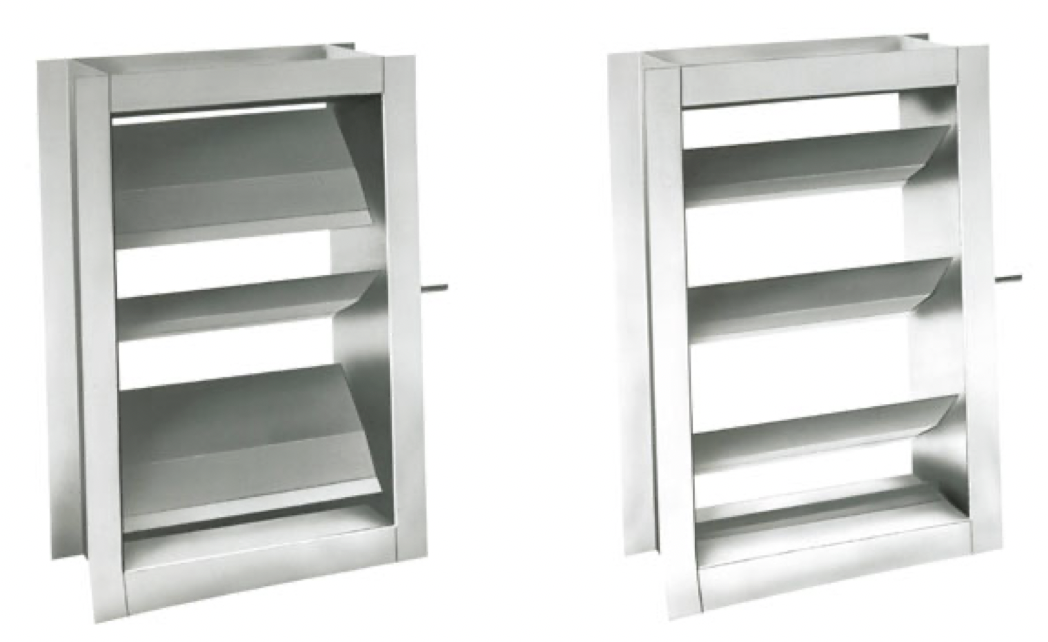
Multi-blade control dampers are often referred to as rectangular dampers or multi-blade louver dampers. These dampers are typically found in two varieties based on the blade action – the direction the blades rotate in the control damper.
- Parallel blade action means that all blades open and close at the same angle and direction.
- Opposed blade action means that adjacent blades rotate in opposite directions.
As a very general rule, parallel blade dampers are used for open/closed operation and opposed blade dampers are used for modulating damper operation. However, parallel blades offer better control of airflow near the end of the operating range (near full open or full close positions). Opposed blades offer better control of airflow throughout the entire operating range. Parallel blades are often used to direct or “throw” the air to one side when that provides an advantage, whereas opposed blades provide more laminar airflow.
Applications
Multi-blade control dampers can withstand temperatures greater than 1800°F and pressures greater than 60 in. wg. This makes them ideal for many different industrial processes and applications.
Parallel blade dampers may be used in gas turbine inlets and outlets, fan inlets, atmospheric exhaust, scrubbers/oxidizers, and precipitators.
Opposed blade dampers are excellent for fast power generation, air filtration inlets, discharge outlets for fans, and glass or metal tempering systems.
2. Single Blade Dampers
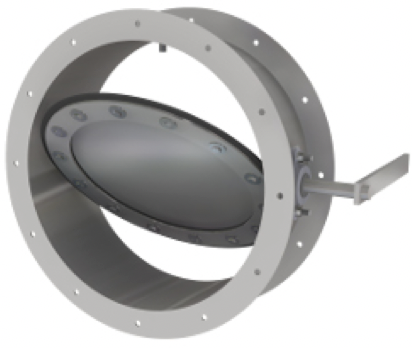
Single blade dampers are often referred to as butterfly dampers or wafer dampers.
These dampers can be supplied in round, square, or rectangular varieties. The blades can be of a single thickness or double skin airfoil design. In many cases, a single blade damper can offer cost efficient alternative to an expensive valve.
Applications
Butterfly dampers can be used in a wide variety of applications but are commonly used for flow control and low leakage or isolation applications. These dampers can also be designed to withstand extreme design pressures and very high temperatures, while also keeping pressure drops low through the system. Single blade dampers can be used in systems with corrosive and abrasive air flows, making them ideal for environmental controls and wastewater treatment applications.
3. Backdraft and Pressure-Relief Dampers
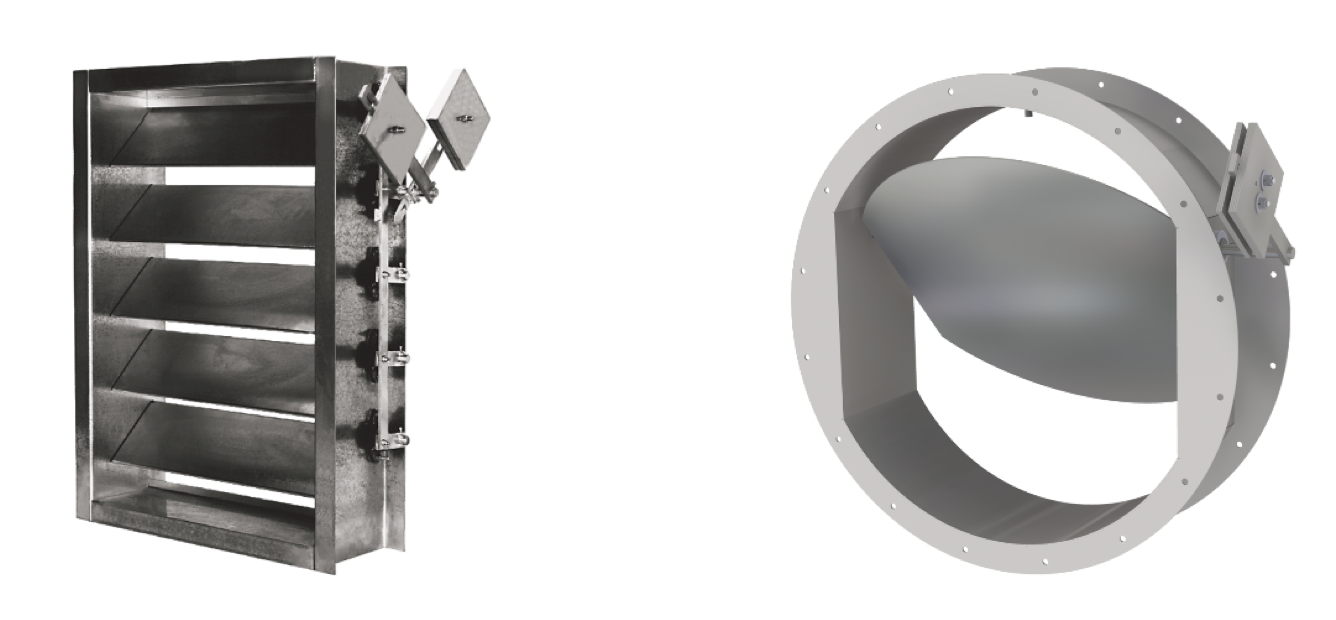
Commercial and industrial backdraft dampers, also known as gravity dampers, are used across light, medium, and heavy duty industrial and HVAC applications.
Backdraft dampers allow for automatic airflow in only one direction while preventing reverse flow back through the unit. Backdraft dampers are commonly found on fans to prevent back pressure that could cause the fan to backspin.
Pressure relief dampers allow for these same functions but do so at an elevated, and in most cases adjustable, start to open pressure. These dampers are typically used to prevent over-pressurization of the system.
Applications
Both backdraft and pressure relief dampers may be used in steel mills, utility mills, and refineries because these systems require significant exhaust, as well as pressure relief and ventilation.
4. Face and Bypass Dampers
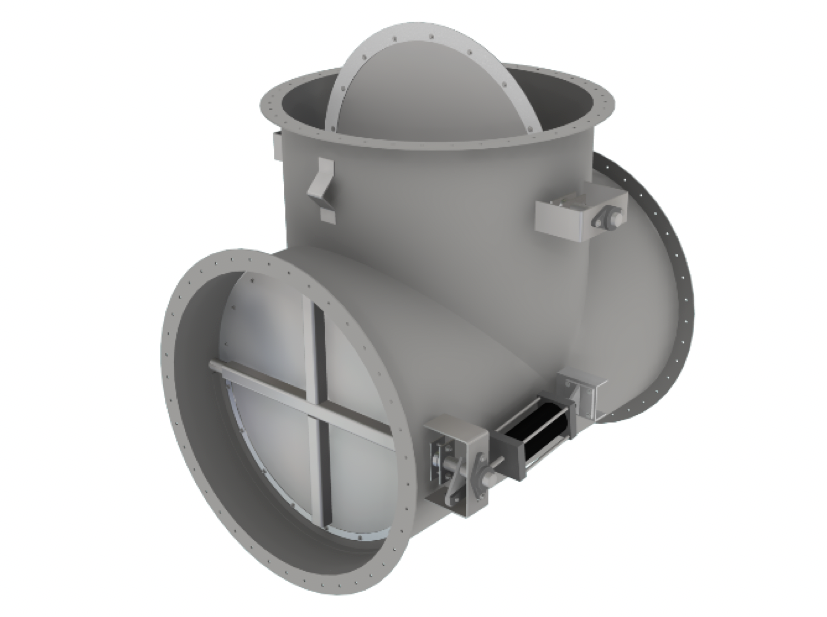
Face and bypass dampers are often referred to as diverter dampers or tee dampers.
This type of damper is frequently used to redirect high-temperature gases from turbines to recover heat. These dampers are part of a dual damper setup that often appear in a tee-pipe configuration.
Applications
Face and bypass dampers are often deployed across cogeneration units for waste heat recovery boilers. They also may be used in pollution control applications and for gas power exhausts and heat recovery setups.
5. Inlet Vane Dampers
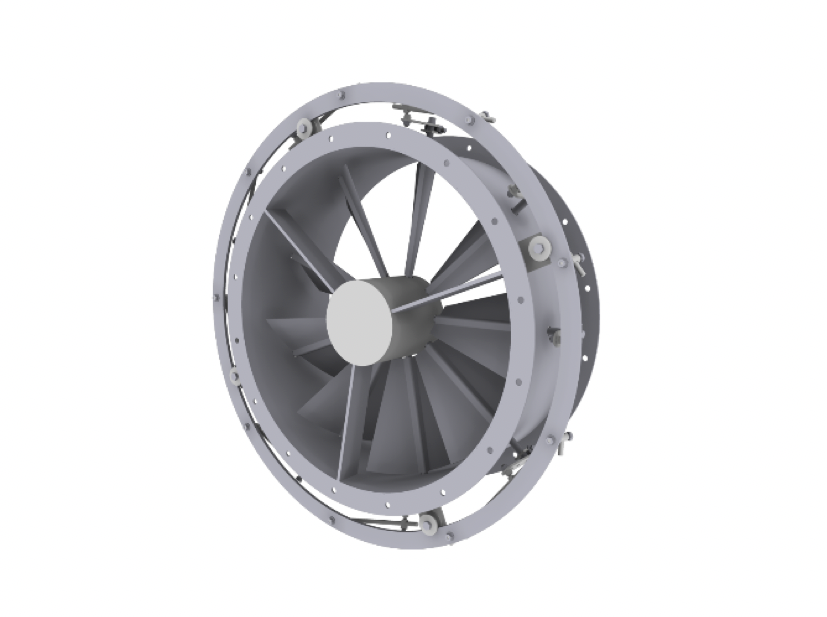
Inlet vane dampers are often referred to as inlet vane controls (IVC dampers) or variable inlet vanes (VIV dampers).
These dampers are used to control the relationship of the flow/pressure of a fan or blower from the inlet side. They are typically mounted right to the inlet of the fan and can offer both fan shut-off and control by rotating in a specific direction to pre-spin the air entering the fan or blower.
These multi-blade round dampers are designed to deliver dependable and durable operation as well as reliable cost savings for most fan or blower operations.
Applications
Inlet vane dampers are popular with facilities that require complete control and regulation over their ventilation, such as automotive, flue gas, and oven recirculation facilities.
6. Isolation Dampers
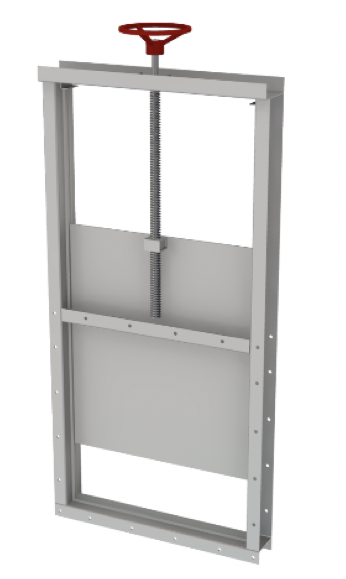
Bubble tight dampers and guillotine dampers are two common categories of isolation dampers. These can be purchased for both round and rectangular duct systems.
The high end bubble tight damper models offer the most reliable seals of all HVAC dampers, ensuring that there is no leakage when closed.
The high end guillotine damper models can be provided with a seal air fan to achieve zero leakage while nearly eliminating pressure drop through the damper. The primary function of guillotine dampers is for isolation and shut-off of duct work systems to close off equipment and allow for maintenance.
Applications
Bubble tight dampers are commonly used in wastewater treatment facilities. Guillotine dampers are often used for scrubber inlet and outlet isolation, flue gas clean up, stack isolation, and precipitator isolation.
Making Your Decision
The various types of industrial dampers are used to fulfill different requirements and service conditions – and so, one style simply can’t fulfill all industrial application needs.
It is essential to have a clear idea of how these different types operate and will apply to your business before you select a model.

Want to know more? We can help – Click here to learn more about the different types of dampers available with AWV or contact us to talk to a representative today.







